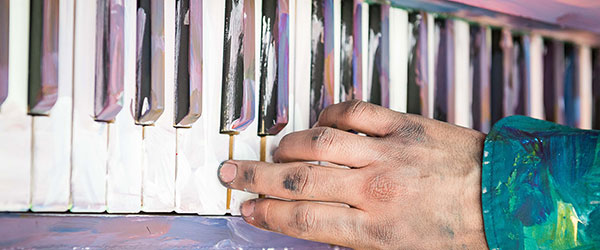Click here to download a pdf of this lesson, and click on the video below to see the lesson. This lesson is for any beginner who wishes to break into the world of improvising. Congratulations on taking the first step.
Musical improvisation involves learning a variety of small things that can be brought together into a complete piece. A painter learns to uses different colors, textures, brush sizes and shapes, brush strokes, and techniques like light, shadow, and perspective to create beautiful works of art. Similarly, a musician learns over time to draw from a wide palette of options to create and communicate musical ideas.
In this series, we look at some of the basic building blocks of improvisation, beginning with the white keys. On the piano, when we use just the white keys, it means we are using the key of C major, and the notes we are using are the notes of the C major scale. Later we will branch out into other keys.
To use this lesson, you will need to know your finger numbers (thumb=one, index=two, pinky=five, etc.) and you’ll need to know the names of the white notes (C-D-E-F-G-A-B) .
With these notes, we will create six chords, and we’ll use them to make up a chord progression. Notes, chords, and chord progressions are some of the basic pigments for your musical palette that over time you will learn to use to paint your musical landscapes.
By the end of this first lesson, you will have learned how to use the white keys to create triads (three-note chords) and how to use these triads to create your first song.
Coming up in Lesson Two: more ingredients for your musical recipes.


